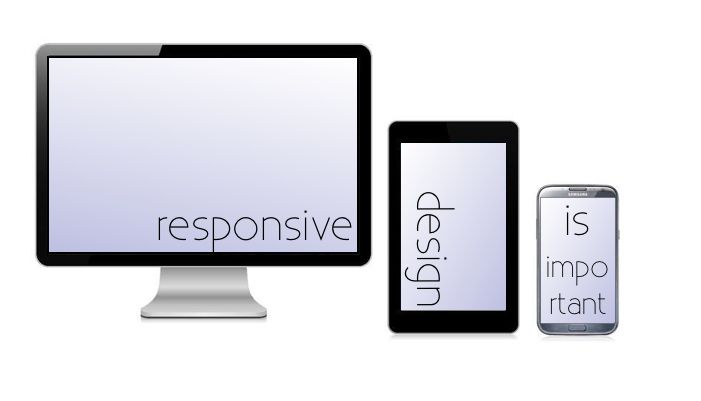Why Responsive Design is So Important


There’s no arguing about this fact: Responsive Design is really important. No doubt you’ve heard of it. Maybe you know a little bit about it. Perhaps you even have a responsive site already. Whatever the case, responsive design is the new must-have of website design. Here’s why.
The Importance of Responsive Design – A Word from the Pros
The tech oracles have spoken on the importance of RWD. Neil Patel (QuickSprout) wrote that “ responsive design is “ a standard that’s taking everything you know about web design and turning it on its side.” He claims that responsive design influences everything about a site, including conversion rates. He’s right. John Polacek’s masterful treatment of the subject declares that it’s a “fundamental shift in how we’ll build websites for the decade to come.” Mashable prophesies that 2013 is “the year of responsive design.” .net Magazine placed responsive design at number two of their Top Web Design Trends for 2012.
This is kind of a big deal.
There’s more to responsive design that just tweaking CSS or adding bits of code to a site. Responsive design is all about how the web is maturing.
Responsive design is important because mobile is dominating.
Responsive design was born because of mushrooming mobile statistics. When the market became saturated with mobile users, we all finally realized that tiny screens weren’t optimal for traditional websites. UX stunk. Responsive design was the answer. The growth in mobile is where every discussion of responsive design must begin.
Responsive design fills in where apps left off.
Apps are not the answer to a mobile-saturated society. As mobile devices grew in popularity, so did the demand and appetite for apps. Remember Apple’s slogan, “there’s an app for that”? That was so 2010. We’ve reached a point now where apps have plateaued. Plus, the iPhone isn’t the only big player in the mobile market. There are more platforms that need to be appified. Savvy companies don’t feel the need to rush out and make a fancy app. Instead, they unleash the power of responsive design. It’s better, smarter, cheaper, and way more 2013. Besides, if conversions are the goal, why create an app? An app can often be a distraction or barrier to conversions. Responsive saves the day by allowing a businesses website to do what it’s supposed to do rather than get bogged down in app building.
Responsive meets the need of multiple devices.
Today, we've got desktops, notebooks, netbooks, tablets, and handhelds of every size, dimension, and resolution. With all these net-accessing devices, there is no way that a static site design will please everyone. The variety of devices demands responsive design.
Responsive design is a design necessity.
We can’t forget that responsive design is at its core a design phenomenon, despite its far-reaching implications. As a design feature, it is designed to take away the unnecessary aspects of a web presence. After all, when you access a responsively designed site on your mobile device, you don’t see everything that you would see if you were to visit from your desktop browser. Responsive design is about simplicity. In order to meet the scaled-down sizes of tablets, minis, and mobiles, responsive sheds the excess, and offers the beautiful and simple core. This is a design trend that’s not going away soon.
Regardless of what CMS you use, what industry you’re in, or what your role in your company is, responsive design is important. Now, it’s time to do something about it. If you are on WordPress, check out our list of where to get Responsive WordPress themes to get started in your transition to a responsive design.